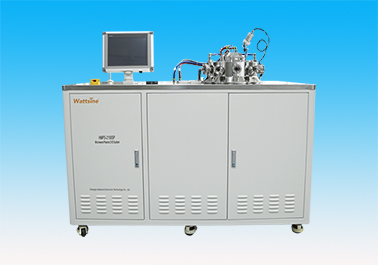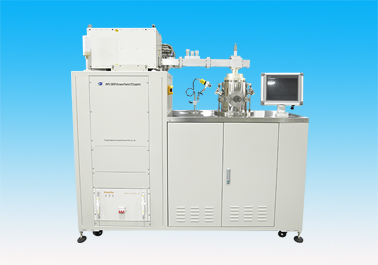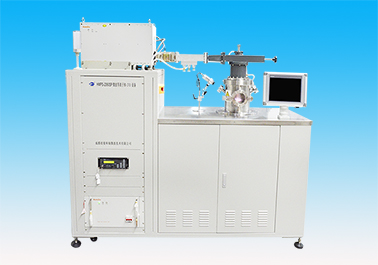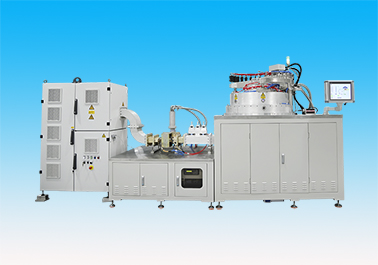Industry Report Analysis: Diamond Microwave CVD Equipment—The “Manufacturing Hub” for High-Quality D
The Microwave Plasma Chemical Vapour Deposition (MPCVD) apparatus constitutes the core equipment for depositing and growing diamond material upon substrate surfaces. This is achieved by utilising microwave energy to excite reaction gases, thereby ionising them to form plasma. Its core operating principle involves utilising a microwave frequency of 2450MHz ± 25MHz to ionise mixed gases such as methane and hydrogen within a vacuum reaction chamber, generating a high-density plasma (electron temperature reaching 7800–8200°C, with ion kinetic energy merely 5–20eV). Active carbon groups are sequentially adsorbed, diffused, and crystallised upon the substrate surface to form diamond.
This equipment offers advantages including no electrode contamination, precise controllable process parameters (gas ratios and deposition pressures from 10 to 250 torr), and controllable deposition temperature. It produces various forms of diamond products, including single-crystal diamond with purity exceeding 99.999%, polycrystalline diamond films, and nanodiamonds. This technology addresses the critical challenges of insufficient purity, high defect rates, and severe contamination inherent in traditional diamond fabrication processes. It serves as the foundational equipment for supplying high-quality diamond materials to sectors such as electronic semiconductors, high-end jewellery, and scientific research.
Global Microwave-Assisted Chemical Vapour Deposition (MPCVD) Equipment Market: A High-Growth Premium Equipment Sector
According to research data from Global Info Research, the global MPCVD equipment market had established a nascent industrial scale by 2024, generating approximately US$313 million in revenue. This scale is underpinned by the rapid release of downstream demand for high-end diamond applications. The electronics and semiconductor sectors' requirement for diamond substrates continues to grow alongside 5G/6G communications development. The jewellery sector's cultivated diamond consumption boom is driving equipment procurement, while research institutions' increased investment in novel diamond materials collectively underpins the equipment market's foundational volume.
Looking ahead, the market is poised for sustained high-growth momentum as high-quality diamond applications expand and preparation technologies undergo iterative upgrades. Global market revenue is projected to reach US$530 million by 2031, achieving a compound annual growth rate (CAGR) of 7.4% between 2025 and 2031. This growth rate significantly outpaces that of the general industrial equipment market, underscoring diamond's pivotal role within high-end manufacturing supply chains. This growth trajectory also reflects the clear trend of global manufacturing transitioning towards ‘high-end materials’. The value of diamond as a next-generation key material is accelerating its release through equipment applications.
Focus on Product Types: Technology Adaptation Solutions Classified by Chamber Structure
Based on variations in core reaction chamber design, diamond microwave CVD equipment (MPCVD equipment) is primarily categorised into two types, precisely matching diverse diamond preparation requirements. These distinctions establish clear specialisations in deposition efficiency, uniformity, and applicable scale:
Butterfly-shaped chamber MPCVD equipment: Its core advantage lies in superior plasma uniformity and effective deposition area. Through the superposition of two resonance modes above the substrate platform, a flat plasma region is formed, enabling simultaneous deposition on large-sized or multiple substrates. However, it possesses a structural limitation: the absence of a tuning mechanism results in poor adaptability. During the latter stages of deposition, when product thickness increases or input power rises, secondary plasma readily forms at the chamber top. This not only reduces plasma density in the target area, affecting growth rate and quality, but may also cause equipment damage due to excessive temperatures at the chamber apex. Consequently, such equipment is better suited for mid-to-high-end research and small-to-medium batch production scenarios, particularly for preparing electronic semiconductor substrates with stringent diamond uniformity requirements, accounting for approximately 40% of global market demand.

Illustration of Hueray microwave 15kW Butterfly-shaped Chamber MPCVD System
Cylindrical Chamber MPCVD Equipment: Employing a single-mode resonant design with impedance matching achieved via a three-pin adapter, this configuration offers superior structural stability and broader power adaptability compared to butterfly chambers, albeit with slightly reduced plasma uniformity. It effectively mitigates secondary plasma issues. Its core advantages lie in process stability and scalability. Optimised waveguide antennas and sealing structures enable equipment miniaturisation and reduced energy consumption (e.g., 40% volume reduction, 30% energy savings), making it suitable for scenarios such as batch production of lab-grown diamonds for jewellery and industrial-grade diamond film fabrication. This equipment boasts high technological maturity and low maintenance costs, representing the mainstream model in the current market with a 60% share of global demand.

Illustration of Hueray microwave 10kW Cylindrical Cavity MPCVD Equipment
Future development of the global diamond microwave CVD (MPCVD) equipment market will focus on three key directions: ultra-high power, intelligent regulation, and domestic substitution. In terms of power, breakthroughs will target high-power levels exceeding 10kW, with deposition rates increasing from the current 24μm/h to over 50μm/h, enabling efficient production of single-crystal diamonds exceeding 10 carats. Intelligence: Integration of real-time monitoring systems (e.g., infrared thermometers with accuracy improved to ±2℃) and AI process control algorithms will enable automated closed-loop control of diamond growth, reducing defect rates by over 60%. Domestic substitution: Breakthroughs in core component technologies—including high-end microwave systems and precision gas pathway control—will achieve self-reliance in electronic-grade equipment.
- > Technical Approach for Di··· 2025-11-21
- > 915MHz/75kw MPCVD system:··· 2025-11-13
- > Technical Advantages of C··· 2025-11-07
- > Industry Report Analysis:··· 2025-10-24
- > Preparation process and n··· 2025-09-24
- > Preferred Method for High··· 2025-09-19
- > Hueray microwave 75kW lar··· 2025-07-16
- > Choosing the Right Microw··· 2025-06-30
Recommended Products














